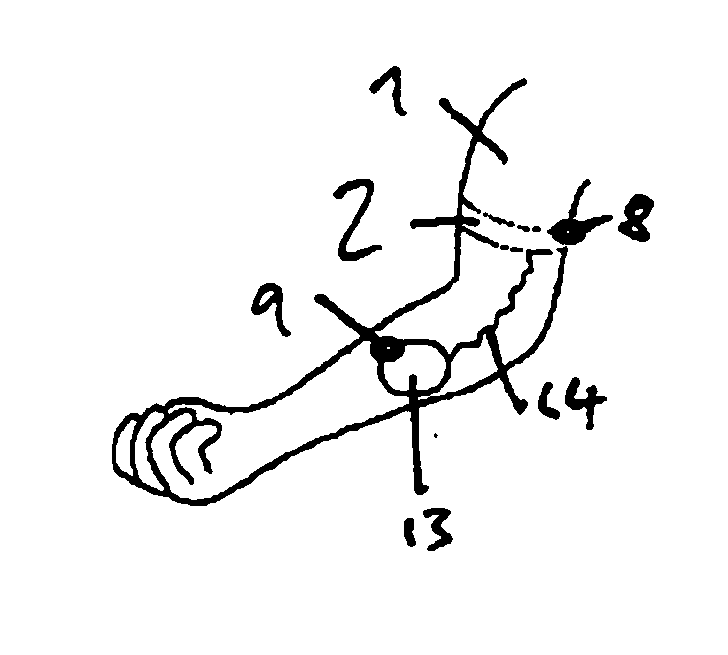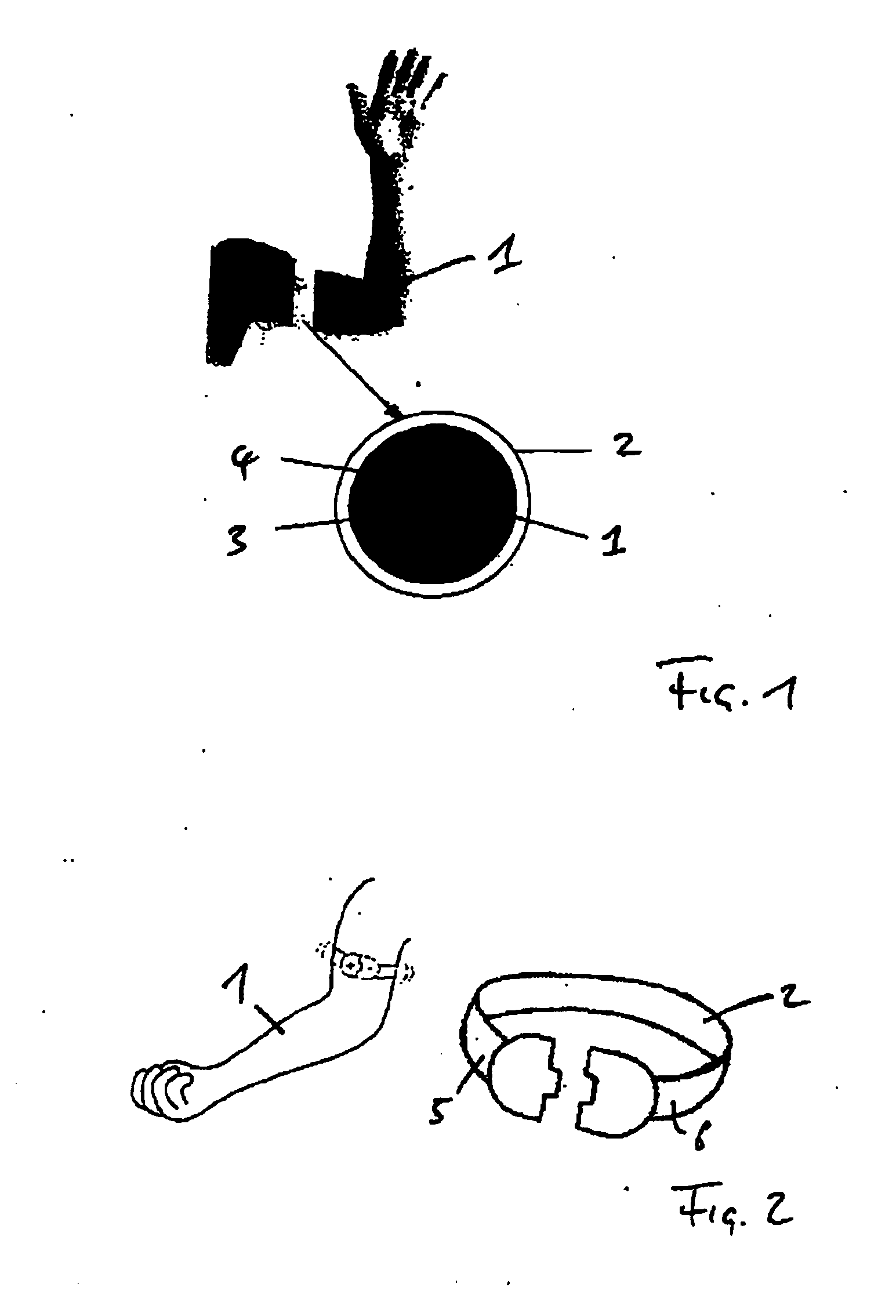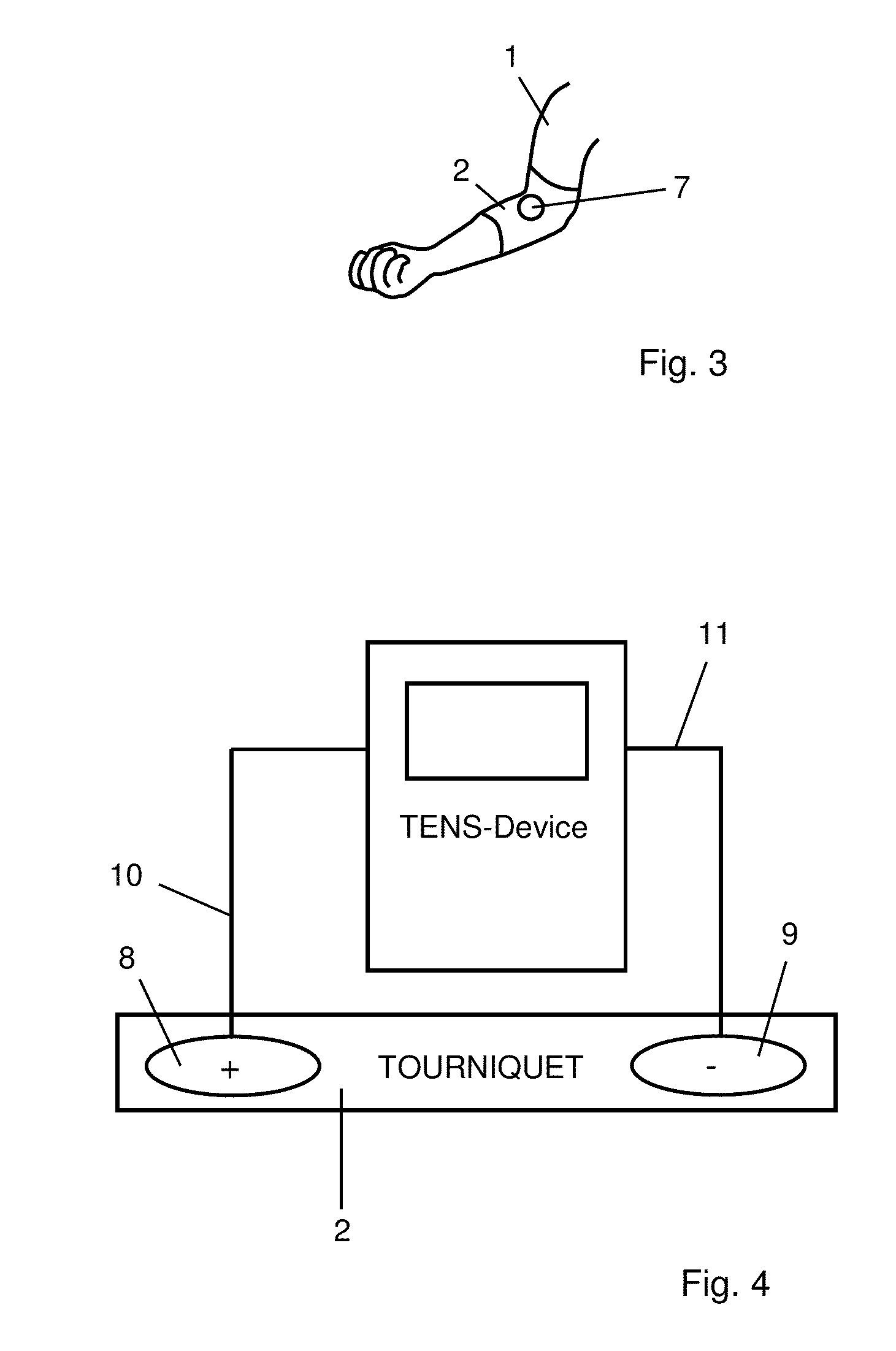Device and method for reducing pain
a technology for reducing pain and pain, applied in the field of devices for reducing pain, can solve the problems of increasing pain perception on the one hand, unpredictable severe pain may occur with minimally invasive medical procedures, and anxiety bordering on panic, so as to reduce pain and reduce pain
- Summary
- Abstract
- Description
- Claims
- Application Information
AI Technical Summary
Benefits of technology
Problems solved by technology
Method used
Image
Examples
first example
[0134]Investigation of the effect of pain suppression according to the invention on various pain modalities by means of quantitative sensory testing (QST)
[0135]This study shows that use of the electrodes according to the invention leads to an increase in the pain threshold when experiencing pain. This may cause a long-term depression (LED) of the synaptic transmission due to low-frequency electrical stimulation.
Method
[0136]On the basis of a protocol for quantitative sensory testing (QST, Rolke, R., Magerl, W., Campbell, K. A. et al., 2006, Quantitative sensory testing: a comprehensive protocol of clinical trials, European Journal of Pain, Vol. 10(1), pages 77-88; Rolke, R., Baron, R., Maier, C., et al., 2006, Quantitative sensory testing in the German Neuropathic Pain Research Network (DFNS): Standardized protocol and reference values, PAIN, Vol. 123(3), pages 231-243; Backonja, M. M., Walk, D., Edwards, R. R., Sehgal, N., Moeller-Bertram, T., Wasan, A., Irving, G., Argoff, C., Wall...
second example
[0146]In a second experimental series the function pattern that was developed (bandage with spiny electrode) (see FIGS. 17 and 18) was tested in pressure pain on the knee.
[0147]For the test procedure a hand-held algometer (Somedic AB, Sweden) was used. The probe tip (1 cm2) was tested on three predetermined skin points in the peripatellar region (see FIG. 19). The pressure was applied at the rate of 30 kPa / s until the test subject reported that the pressure was perceived as painful.
[0148]Six people were tested with the following sequence pattern:[0149]Each person was tested a total of 6 days of three passes each at the Bonn University Clinic (6×3=18 passes)[0150]Days 1 and 2 were performed without stimulation (baseline)[0151]Days 3 and 4 were performed with sham (sham)[0152]Days 5 and 6 were performed with the function pattern (including the electrode assembly)[0153]Each stimulation lasted 15 minutes (effective stimulation pattern: see first example) and was repeated after 45 minute...
third example
[0162]The electrode assembly is identical to the electrode assembly in the second experimental series (flat electrode assembly in an array). In addition, a vibration motor that would set the electrode assembly in vibration and was connected to the electrode assembly was used. A PicoVibe™ motor 4 mm vibration motor, 8 mm type according to Data Sheet 304-008 from Precision Microdrives™ was used as the vibration motor.
[0163]The experimental series with five test subjects showed a further increase in the pain threshold after a stimulation period of 5 minutes in comparison with the first experimental series. The additional vibration thus led to a further reduction in pain and / or pain suppression.
PUM
 Login to View More
Login to View More Abstract
Description
Claims
Application Information
 Login to View More
Login to View More - R&D
- Intellectual Property
- Life Sciences
- Materials
- Tech Scout
- Unparalleled Data Quality
- Higher Quality Content
- 60% Fewer Hallucinations
Browse by: Latest US Patents, China's latest patents, Technical Efficacy Thesaurus, Application Domain, Technology Topic, Popular Technical Reports.
© 2025 PatSnap. All rights reserved.Legal|Privacy policy|Modern Slavery Act Transparency Statement|Sitemap|About US| Contact US: help@patsnap.com



